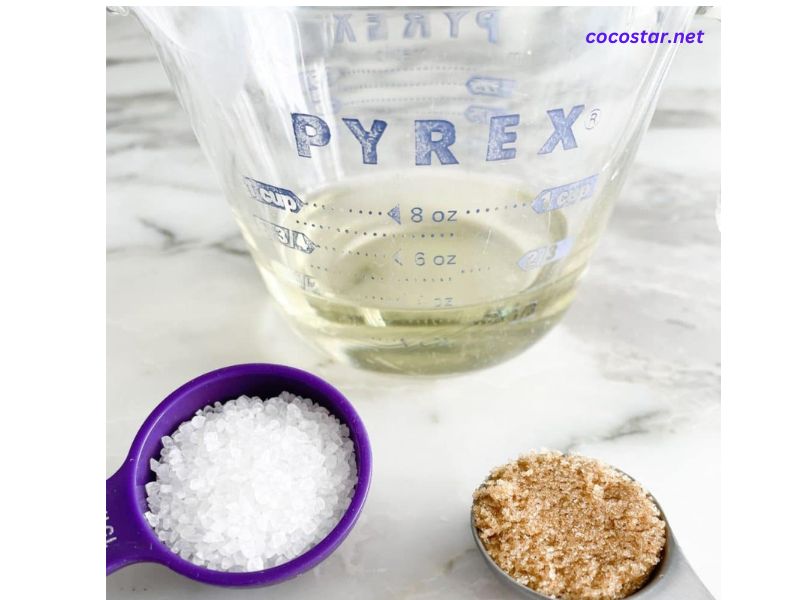Cooking is as much a science as it is an art, and accurate measurements play a huge role in setting you up for success in the kitchen. Have you ever followed a recipe only to end up with a dish that didn’t quite hit the mark? It could be something as simple as misinterpreting measurements.
One question that often puzzles home cooks, culinary enthusiasts, and even food bloggers is this—how many tablespoons are in an ounce? Whether you’re trying to perfect a cake batter, whip up a flawless sauce, or scale a recipe, understanding this conversion is key.
This guide breaks it all down for you step by step, covering ounces, tablespoons, conversions, and more. Plus, you’ll gain practical tips to enhance your confidence in the kitchen.
Why Accurate Measurements Matter in Cooking
Cooking is more forgiving than baking, but precision can still mean the difference between a dish that’s just okay and one that’s unforgettable. Measurements are particularly important when scaling recipes or working with concentrated ingredients like extracts and spices. Knowing how to measure exactly—as well as how to convert between units—gives you control and ensures that your culinary creations shine.
Volume vs. Weight Measurements in Cooking
Before we get to the magic question about tablespoons and ounces, it’s essential to understand the difference between volume and weight measurements.
- Volume measurements are used to measure the amount of space an ingredient occupies. Tablespoons, teaspoons, and cups are common volume measurements.
- Weight measurements, on the other hand, measure how heavy an ingredient is. This is often expressed in ounces, pounds, or grams.
It’s worth noting that an ounce can refer to weight (an ounce of flour) or volume (a fluid ounce of milk). For this guide, we’re sticking to tablespoons as a volume measurement and ounces as a fluid measurement.
What Are Tablespoons and Ounces?
Tablespoon (tbsp) is one of the most common units of kitchen measurement. Typically, 1 tablespoon holds about 15 milliliters of liquid or a similarly small portion of dry ingredients like flour or sugar. On the other hand, an ounce varies based on whether it’s used as a liquid measure (fluid ounce) or weight.
For the purpose of conversions here, we’re looking at liquid ounces used in cooking. When recipes mention “ounces” for liquids like oil, milk, or water, they’re referring to fluid ounces.
Conversion Factors: How Many Tablespoons in an Ounce?
Here’s the quick answer you’ve been waiting for—there are 2 tablespoons in 1 fluid ounce!
The conversion formula looks like this:
1 fluid ounce = 2 tablespoons
Need a quick cheat sheet?
- 1 oz = 2 tbsp
- 2 oz = 4 tbsp
- 4 oz = 8 tbsp (that’s equal to 1/2 cup)
Easy, right? Having this mental note can save you from scrambling for conversion charts mid-recipe.
Practical Examples of Conversions
To make these conversions come alive, here are some practical examples of how they apply to everyday recipes.
Example 1: Whisking Together a Salad Dressing
Your recipe calls for 4 ounces of olive oil and you’re out of measuring cups. No worries! Grab your tablespoon and measure out 8 tablespoons of oil instead.
Example 2: Scaling Down a Recipe for a Sauce
A sauce recipe states 1 ounce of balsamic vinegar, but you’re halving the recipe. Simply measure 1 tablespoon (half of 2 tbsp) and you’re good to go!
Example 3: Measuring Ingredients for Baking
A cake frosting recipe asks for 3 ounces of heavy cream. Convert it to tablespoons for precision and measure out 6 tablespoons to achieve the perfect texture.
Tips for Precise Measurements
- Invest in Measuring Tools
Having a good set of measuring spoons and cups is essential. For liquids, use glass or plastic measuring cups designed for liquid measurement to avoid over- or under-measuring.
- Use Conversion Charts
Consider printing a conversion chart to keep in your kitchen or save one on your phone for quick access.
- Level Your Ingredients
When measuring dry ingredients with tablespoons, use a flat edge (like a knife) to level it off for an accurate portion.
- Weigh When Necessary
For recipes requiring extra precision—baking, for example—use a kitchen scale to measure by weight instead of volume for consistent results.
FAQs About Tablespoons, Ounces, and Kitchen Measurements
Q1. Is there a difference between a US tablespoon and a UK tablespoon?
Yes! A US tablespoon is equal to 15 ml, while a UK tablespoon is slightly larger at 17.7 ml. Keep this in mind if you’re following an international recipe.
Q2. How can I measure an ounce without a tablespoon?
If tablespoons aren’t handy, remember that an ounce equals 6 teaspoons. You could also use a liquid measuring cup with ounce markings.
Q3. Are dry ounces and liquid ounces the same for conversions?
No. A dry ounce measures weight, whereas a liquid ounce measures volume. Always check the recipe context to determine which one you need.
Q4. What is the difference between a “fluid ounce” and a regular “ounce”?
A fluid ounce is a measure of volume (for liquids), whereas a regular ounce refers to weight (for solids). Be sure you’re using the right unit for the ingredient in question.
Mastering Cooking Measurements Like a Pro
Understanding conversions like how many tablespoons are in an ounce may seem small, but these little details make a big difference. Precision in measurements gives you more control in the kitchen, improves your results, and builds your confidence as a cook.
The next time a recipe throws ounces or tablespoons at you, you’ll know exactly what to do. Plus, with these tips and tricks, you’ll minimize guesswork and keep your culinary adventures stress-free.



